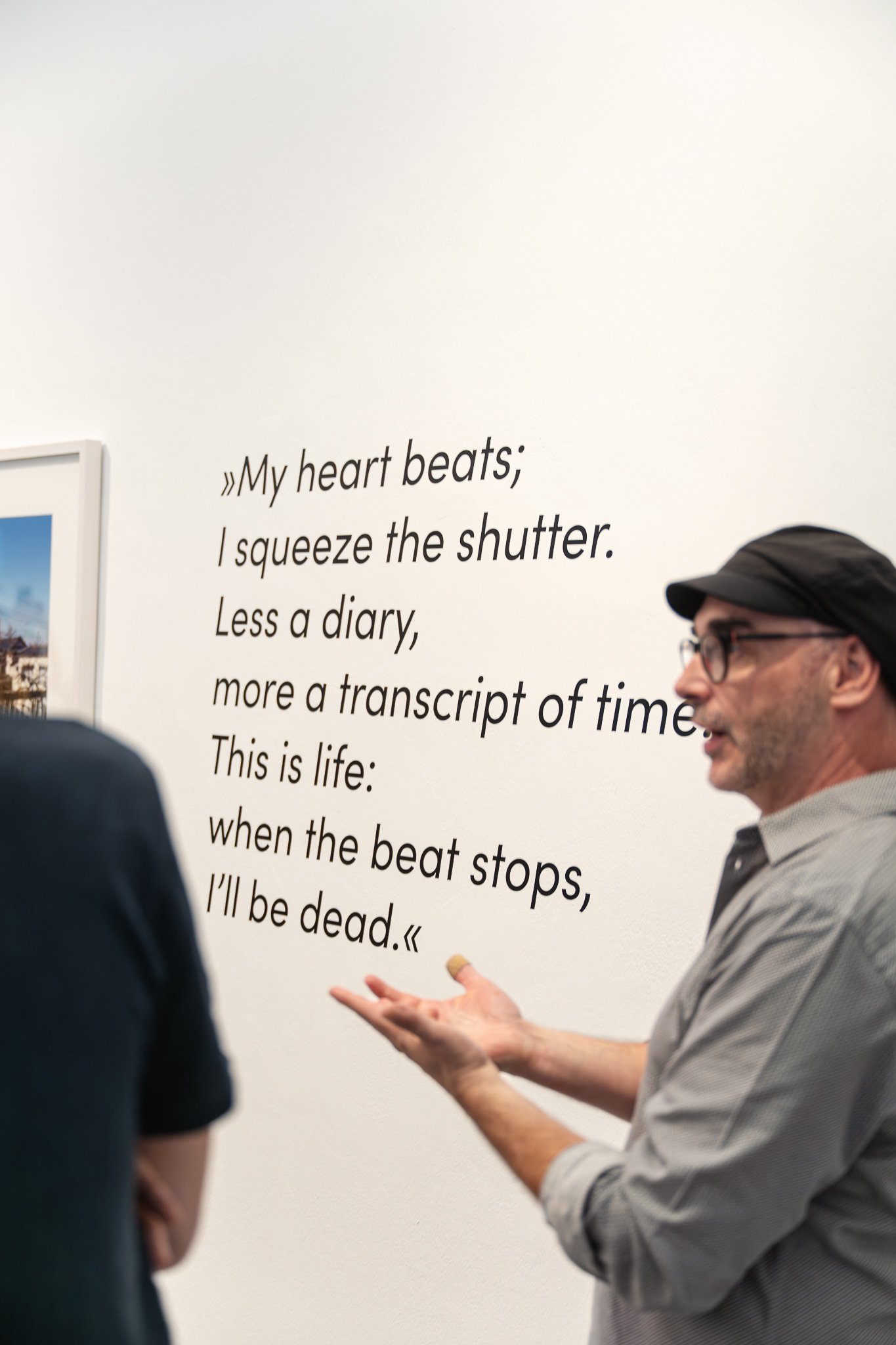Forget the Ropes and Look Closer at Araki
When people speak of Nobuyoshi Araki, the conversation often stops at rope-bound women and erotic shock (Kinbaku photographs, a traditional Japanese art of erotic bondage). But to reduce his photography to provocation is to miss the raw, expansive emotional world he has spent decades documenting. Araki is not merely a photographer of the erotic - he is a diarist of existence, a man who has devoted his entire life to capturing the strange, fleeting beauty of love, death, and the everyday. For a deeper insight into Araki’s work and his photobooks, I highly recommend visiting the exhibition Nobuyoshi Araki at OstLicht, running from June 13 to August 2, 2025.
You can find more photos on my Gallery Website.
Born in Tokyo in 1940 and raised in the working-class Shitamachi district, Araki grew up among the textures of post-war life—an atmosphere of decay, reconstruction, and emotional volatility. After graduating from Chiba University with a degree in photography and film, he took a job at the advertising giant Dentsu, where he sharpened his visual instincts. But his true transformation came in 1971, when he married Yōko Aoki. Their relationship would become the emotional heart of his work, particularly in his landmark series Sentimental Journey. This photo diary of their honeymoon broke new ground in Japanese photography: personal, tender, erotic, and deeply sincere. When Yōko died of cancer in 1990, Araki extended the series with Winter Journey, a devastating documentation of her illness and death, revealing his ability to turn grief into visual poetry.
Michael Kollmann, photobook specialist at WestLicht/OstLicht, will lead a guided tour offering insight into the diverse and multifaceted work of Nobuyoshi Araki.
For Araki, photography is not art—it’s autobiography. He photographs everything: not just lovers and naked bodies, but cats, flowers, meals, dirty streets, and hotel rooms. Erotic images are as central to his work as funeral portraits and childhood memories. His themes—love, lust, grief, aging—are not separate; they’re entangled. Sex in his world is inseparable from sadness. Joy always hints at its own vanishing. That duality—of life and death, eros and thanatos—is where Araki’s work draws its strange power. In order to express his ideas he was always on the bleeding edge of technology, using huge Polaroids (which until today have an astonishing quality!), ring flashes or early digital cameras which - according to todays standards - show a not-so-astonishing-quality ;)
His background in Japanese aesthetics and culture shaped his vision profoundly. The eroticism in his photography echoes shunga woodblock prints from the Edo period, which were explicit, playful, and culturally embedded. Araki’s fascination with rope bondage, or kinbaku, is not a Westernized BDSM spectacle but a traditional form of Japanese erotic art—less about domination, more about aesthetics, vulnerability, and emotional intensity. His work also embodies the Buddhist idea of mujo, the impermanence of all things. Death is never far away, even in his most colorful, sexually charged images. And his Tokyo—loud, intimate, decaying—is always present, both as a setting and a symbol of modern Japanese life.
Exhibition View Nobuyoshi Araki at Ostlicht, 2025
Over the years, Araki’s style evolved with the shifts in his life. In the 1980s and ’90s, his work became more overtly sexual, with projects like Tokyo Lucky Hole, a brash, voyeuristic chronicle of Tokyo’s sex clubs. But even this series—filled with pornographic imagery—carried a documentary honesty, blurring the lines between fantasy and real life. After the loss of Yōko, and later his cat Chiro (also a frequent subject), Araki’s tone darkened. In later years, after being diagnosed with cancer and losing vision in one eye, his work grew more abstract. He began painting on photos, embracing distortion, decay, and imperfection as new ways of expressing the fragility of being.
Exhibition View, Nobuyoshi Araki at Ostlicht 2025
Among his most essential books is Erotos, a sensuous exploration of everyday objects rendered erotic through form and texture. Araki by Araki, a self-curated retrospective, offers a map to his sprawling body of work. His Polaroids and collages, especially in his later years, reveal a man unafraid to play, to experiment, to make a mess in pursuit of truth. And his many portraits of Chiro the cat show his tenderness most clearly: these images are not about animals, but about love, attachment, and inevitable loss.
In the end, Araki’s work resists categorization. He is not simply a provocateur, nor a documentarian, nor a romantic. He is all of those at once - his style had decades to develop. His photography, at its best, is a mirror—not just of his life, but of what it means to live fully, love deeply, and lose everything. To understand Araki, you have to look past the ropes and into the quiet moments between: the gaze of a dying woman, the wilted petals of a flower, the empty street at dusk. That’s where his truth lives. The Ostlicht gallery is the perfect place to dive into his work at your own pace.
Other blogposts that might be interesting:





























